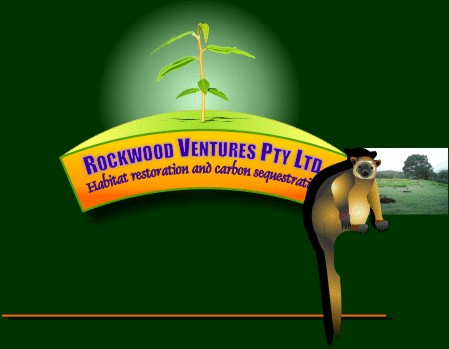
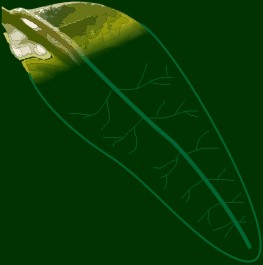
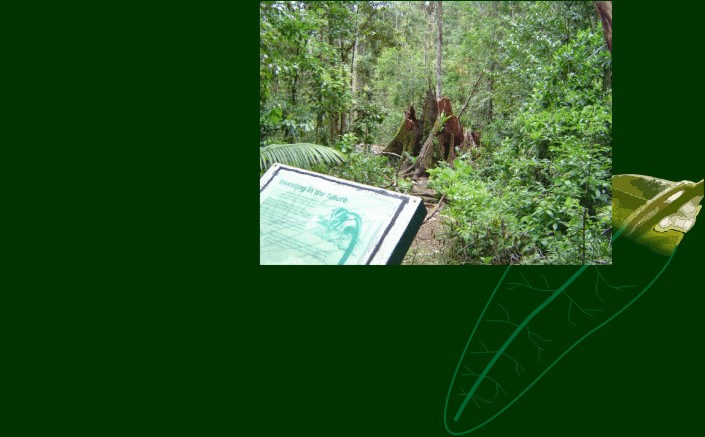
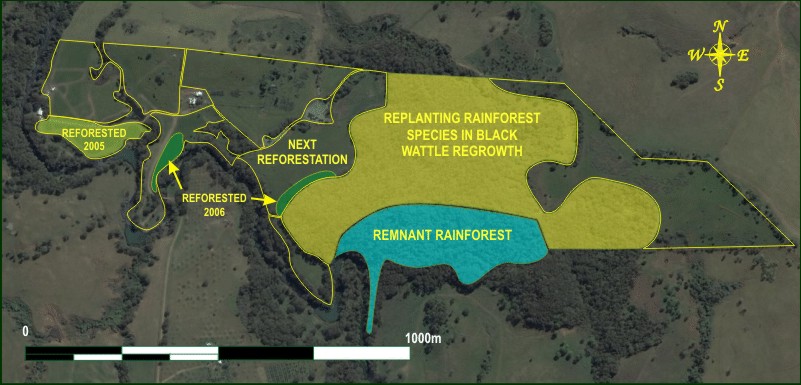

Watering in a red cedar (Toona ciliata) a rainforest species being planted in the black wattle regrowth area (see below). Note the cut logs - part of the cleanup after Cyclone Larry Perhaps one of these trees will be the next Gadgarra red cedar
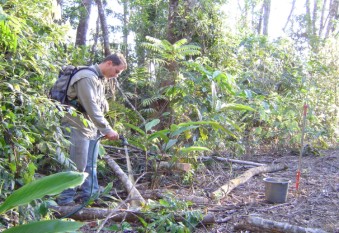
Rockwood Ventures' rainforest habitat research plantation is located on an ecotourism business property in the Atherton Tablelands near mount Bartle Frere (Queensland's highest mountain) in the Wet Tropics World Heritage Area of Far North Queensland. The area is one of the most productive dairy regions in Australia owing to the high rainfall and volcanic soils, which produce lush pastures where virgin rainforest once grew. The embattled remnant rainforest in this important region hosts Australia's richest biodiversity. It is also home to the giants of the forest: magnificent tree specimens that have grown to towering proportions in the sun-soaked and rain-drenched, rich volcanic soils. Trees such as the twin Bull Kauris, Cathedral Fig Tree and Giant Red Cedar (long may he rest…) are all within 50km of our trial rainforest research plantation. These are remnants of the once great rainforest that covered the region. Unfortunately, since the 1950's, Government-endorsed private land clearing for agriculture has devastated the wilderness and released millions of gigatons of green house gases (GHGs) into the atmosphere through
burning and soil disruption (the Government at the time demanded each landholder clear 10 acres a year or loose their title; they also demanded that all timber be burned to prevent ‘cherry-picking’ plots with the most valuable timber resources). These unsustainable practices have recently been curtailed and efforts are now being made to regenerate the rainforest. It is our belief that these efforts must be commercially viable in order to be taken up on a scale large enough to repair the damage from generations past.
“...The Wet Tropics has one of the highest levels of biological diversity of any region of Australia and is represented on ‘The Global 200 List’ [1] – a collection of the world’s 200 most outstanding, important and diverse terrestrial, freshwater and marine habitats. The World Conservation Monitoring Centre recognises 17 megadiverse countries which collectively harbour 75 percent of total global biological diversity [2]...”
State of the Wet Tropics Report 2006-2007 [3]





[1] – Olson, D.M., Dinerstein, E., Abell, R., Allnutt, T., Carpenter, C.,McClenachan, L., D’Amico, J., Hurley, P., Kassem, K., Strand, H., Taye,
M. and Thieme, M. (2000). The Global 200: A Representation Approach to Conserving the Earth’s Distinctive Ecoregions. Conservation Science Program, World Wildlife Fund-US.
[2] – EPA (1999). State of the Environment Queensland 1999. Environmental Protection Agency, Brisbane
References
Then along came larry... The Gadgarra red cedar (toona ciliata), thought to be about 500 years old and standing 50m high, was felled by Tropical Cyclone Larry on 20 Mar 2006









